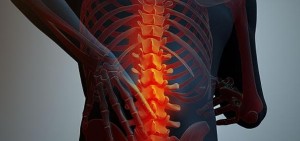by Lisa O’Brien, Remedial Massage Therapist
The sciatic nerve is the longest and widest single nerve in your body, running from your lower spine down each leg and ending in each foot. It stems deep down through your buttocks and branches down the back of the leg into the calves and feet.
Sciatica refers to the pain, numbness and other symptoms caused by compression or inflammation of this important nerve, and it’s typically felt along the nerve pathway described. You may also experience weakness and fatigue of your lower body, or restriction of movement and loss of flexibility. The pain can be burning, cramping, tingling or numb.
What causes sciatic pain?
Sciatic pain is a result of body imbalances that puts pressure on the nerve. Weight bearing indifference – the weight of your body and muscle imbalances can cause your spine to twist or tilt causing distortion in the spine structure, and uneven pressure on the joints. In particular the Sacroiliac Joint (S.I.J) and the facet joints of L4, L5 verterbrae.
Muscle imbalances can start off quite subtle but the whole body is compensating. Overtime these uneven pressures cause prolonged strain and stress on the nerve, muscles, ligaments and tendons, effecting the alignment of your spine. The longer these imbalances are left uncorrected the more the body has to compensate, which sets you up for a greater potential for injury. What usually happens then is that simple little things like picking something up off the ground or lifting something can be just enough to trigger injury, nerve pain, spasm, pain and in some cases, people are unable to even walk properly.
Some factors which can cause, trigger or worsen sciatica are:
· muscle imbalances
· vertebrae mis-alignment
· tight piriformis muscle
· poor posture
· arthritis
· pregnancy
· lumbar spinal stenosis – narrowing of the spaces carrying nerves to the lumbar spine
· spondylolisthesis – where one vertebrae slips forward over the vertebrae below it.
· bone spurs or osteophytes (bony growths)
· herniated or bulging discs
· injury (old or recent)
Here are the top five most effective stretches to relieve your sciatica pain, and three you should avoid to keep from inflaming your sciatica further.
The Five Best Sciatica Stretches
 These simple but effective sciatica stretches are indicated for relaxing the lower back, pelvic floor, buttocks and legs. They also work to help you strengthen these key areas for reducing or preventing sciatica pain by allowing the spine to return to its natural, functional alignment.
These simple but effective sciatica stretches are indicated for relaxing the lower back, pelvic floor, buttocks and legs. They also work to help you strengthen these key areas for reducing or preventing sciatica pain by allowing the spine to return to its natural, functional alignment.
For best results, repeat these several times a day until your pain subsides.
Before you begin, lay flat on your back with your arms at your sides and legs outstretched. Allow your body to relax and clear your mind in preparation for these pain-relieving stretches.
Remember: listen to your body. If anything hurts, stop or reduce the intensity immediately.
1. The Complete Back Stretch
While you’re lying on your back, perform this stretch. It will relax your entire back and is very effective at alleviating sciatica pain.
How to Do It:
- Bring both your knees to your chest
- Wrap your arms around your legs, at the knees, and relax your lower back
- Do not try to “crack” your spine—this is purely for relaxing your back
2. Lower Back Stretch
This exercise stretches and relaxes your lower and middle back specifically. Remember to be gentle while stretching your back.
How to Do It:
- From your flat back position, bend one knee to a 90 degree angle while keeping your foot on the floor
- Allow your knee to “fall” gently to the opposite side of your body, letting your hips twist
- Rest your foot on the floor for support and try to keep your back and hips flat on the floor
- Repeat on both sides for 10-20 seconds
3. Pretzel Stretch
This stretch is excellent for releasing tension in your buttocks and pelvic floor.
How to Do It:
- From your flat back, bend both knees while keeping your feet on the floor
- Bring the right ankle atop the left knee
- Pull your left thigh back toward your body slowly
4. Single Leg Stretch & Lift
A common exercise in Pilates practices, the single leg stretch and lift will strengthen your core and hip flexors while stretching the buttocks and hips.
How to Do It:
- From your flat back, lift one leg to a 90 degree angle, supporting your thigh with both hands
- Keep your foot parallel with the floor
- Then, lift your other leg a few inches off the ground, your foot at 90 degrees
- Repeat the lift 12 to 15 times, then switch
5. Modified Quadricep Stretch
This stretch is great for relaxing your hips and quads.
How to Do It:
- Flip gently over to your stomach and lay flat.
- Lift one leg up behind you, bend your knee, and grip your foot or ankle with the hand on the same side (i.e. right foot, right hand)
- Pull your foot as close to your body as possible, but don’t pull too hard. Go for a relaxing stretch, not an intense burn.
Three Exercises to Avoid With Sciatica
When sciatica pain is at its worst these stretches may seem like common sense, instinctual exercises to do… but they can actually make your pain worse.
1. Downward-Facing Dog
This popular “fix all, relax all” yoga pose may feel good after a long vinyasa, but not if your sciatica is currently acting up. Downward-Facing Dog not only stretches the hamstrings, but your calves and tendons down to your heel
Downward-Facing Dog and yoga are recommended for maintaining your condition, but only after acute sciatic pain has subsided.
2. Hamstring Stretch
Whether you’re standing and leaning forward, in a runner’s stretch, or leaning over both feet, this one stretch can aggravate the entire length of your sciatic nerve, from the lower back to the heel.
3. Leg Circles
A common exercise in Pilates and martial arts, swinging your leg in a full circle will stretch the hamstring suddenly, possibly causing severe pain down your sciatic nerve.
Besides these three, as a general rule you should avoid high impact, jarring exercises or sports until you have corrected the condition causing your sciatica pain.
Other Tips To Prevent Sciatica
There are some key things to keep in mind when trying to minimize and prevent sciatica. They are:
- Good posture
- Avoid wearing high heels
- Avoid sitting or driving for extended periods
- Invest in having regular maintenance
- Stretching or yoga
- Nourish your muscles, nerves, tendons and ligaments with the right minerals and vitamins
- Take care of your emotional well-being
- Reduce stress levels
Treatment May Be Needed
It is always recommended that treatment be sought for any sciatica problems so the cause can be identified and corrected accordingly. Three very effective treatment options are massage, acupuncture and FSM (Frequency Specific Microcurrent)
By applying an overall full body approach with focus on key areas to rebalance the muscular system and release the spasm or pressure off the nerve, means much better results will be achieved.
Remember: Pain is a feedback mechanism to let you know you something needs attention. DO SOMETHING ABOUT IT AND GET TREATMENT SOONER RATHER THAN LATER. The longer you leave it the more wear and tear occurs, the more structural imbalances worsen, and the deeper the problem gets.










